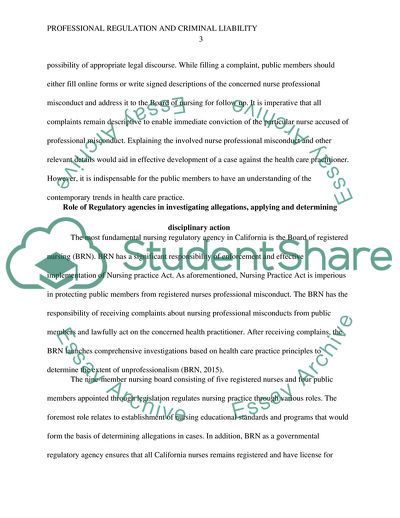Cite this document
(Professional Regulation and Criminal Liability in Nursing Research Paper - 1, n.d.)
Professional Regulation and Criminal Liability in Nursing Research Paper - 1. https://studentshare.org/nursing/1861018-professional-regulation-and-criminal-liability-paper
Professional Regulation and Criminal Liability in Nursing Research Paper - 1. https://studentshare.org/nursing/1861018-professional-regulation-and-criminal-liability-paper
(Professional Regulation and Criminal Liability in Nursing Research Paper - 1)
Professional Regulation and Criminal Liability in Nursing Research Paper - 1. https://studentshare.org/nursing/1861018-professional-regulation-and-criminal-liability-paper.
Professional Regulation and Criminal Liability in Nursing Research Paper - 1. https://studentshare.org/nursing/1861018-professional-regulation-and-criminal-liability-paper.
“Professional Regulation and Criminal Liability in Nursing Research Paper - 1”. https://studentshare.org/nursing/1861018-professional-regulation-and-criminal-liability-paper.


